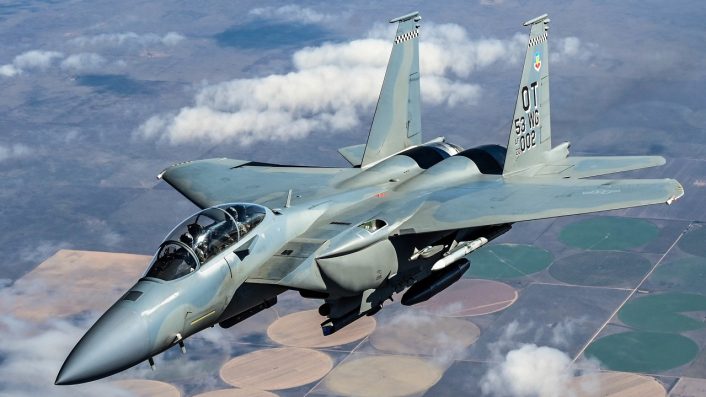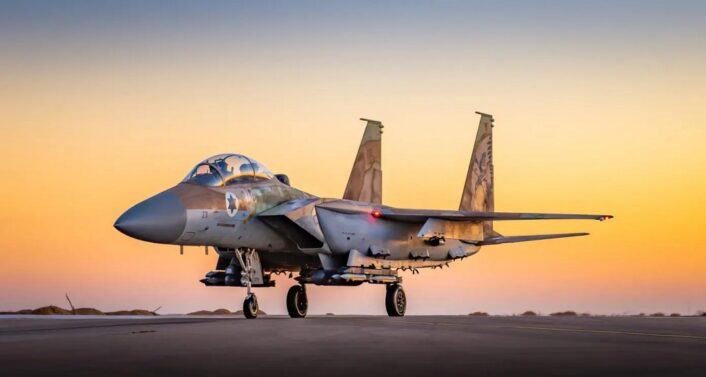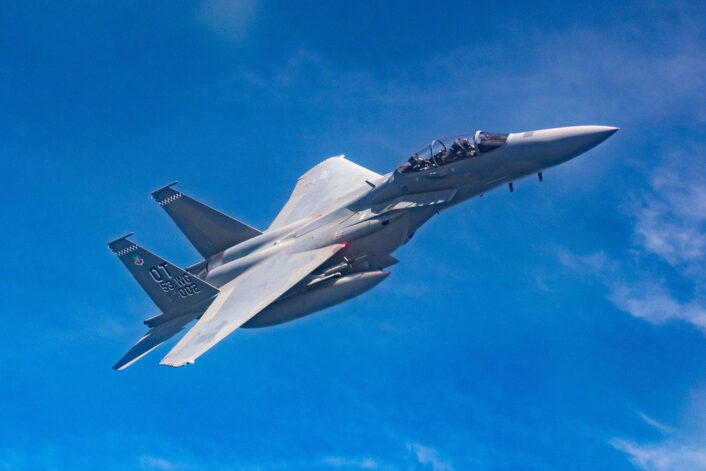The U.S. Secretary of State has approved the sale to Israel of 50 F-15EX, which will be named F-15IA, and the upgrade to a similar configuration of the 25 F-15I Ra’am currently in service.
The U.S. Defense Security Cooperation Agency (DSCA) has just announced that the Secretary of State approved the possible Foreign Military Sale (FMS) to Israel of the F-15EX Eagle II. The aircraft, which has been named as F-15IA (Israel Advanced) will be sold together with the Mid-Life Update kits for the F-15I Ra’am already in service, which will take the existing fleet to the same configuration of the newer variant.
The deal, worth $ 18.82 billion, is part of five Israeli FMS cases approved today. These also include AIM-120 AMRAAM missiles, 120 mm tank cartridges, 120 mm mortar cartridges and medium tactical vehicles. The approval of these FMS deals comes as tensions continue to rise in the Middle East while waiting for the retaliation attack that Iran has promised against Israel.
The DSCA notice mentions that Israel requested the sale of up to 50 F-15IA, together with 25 MLU modification kits. In addition to that, the FMS involves also 120 F110-GE-129 turbofan engines, 90 Advanced Display Core Processors II, 75 APG-82(V)1 Active Electronically Scanned Array (AESA) radars and 50 AN/AAQ-13 LANTIRN navigation pods.
It is interesting to note the absence of the EPAWSS (Eagle Passive Active Warning Survivability Systems) in the equipment list. The ALQ-250 is an advanced electronic warfare and electronic surveillance system, which is fully integrated with radar warning, geo-location and increased chaff and flare capability to detects and defeat surface and airborne threats in signal-dense and highly contested environments, according to BAE Systems.
Other equipment includes LAU-128 missile rails, M61 Vulcan 20 mm cannons, Embedded Global Positioning System/Inertial Navigation System devices, Joint Helmet Mounted Cueing Systems, APX-119 Identification Friend or Foe (IFF) systems. These add to the usual support, logistics, spare parts which usually are involved in similar programs. Deliveries are estimated to begin in 2029.

The second FMS for the Israeli Air Force involves 30 AIM-120C-8 Advanced Medium Range Air-to-Air Missiles (AMRAAM) and related equipment, for a total cost of $ 102.5 million. The DSCA mentions the weapons will be sourced from new production, without providing a delivery date.
The FMS notice added that “it is vital to U.S. national interests to assist Israel to develop and maintain a strong and ready self-defense capability,” before mentioning the recent events. “AMRAAMs are a key aerial combat capability used to defend against airborne threats, such as the missile and drone salvo launched at Israel on April 14,” mentions the notice.
The sale of the F-15EX
The sale of the newest F-15 variant to Israel has been reported in the making for long. Last year, the Israeli Ministry of Defense sent an official Letter of Request to the United States government, starting the process for the possible approval of a Foreign Military Sale.
The Israeli government already showed interest in the F-15EX in 2020, when acquiring more F-35s and F-15s was put among the top priorities. However, political instability, budget issues and the Gaza war delayed the F-15 deal, while only the contract for more F-35s was finalized. Since 2020, the Israeli Air Force expressed an urgent need for more F-15s that could haul heavy loads, including heavy weapons made in Israel to destroy reinforced targets, such as Iranian nuclear sites.
Initially only 25 aircraft were requested, although it was reported that they could be increased to 50. The sale of the MLU modification kits was also expected, as Israel requested the upgrade of its 25 F-15I Ra’am, the Israeli variant of the F-15E Strike Eagle, to an avionic configuration similar to the F-15EX.

The F-15EX Eagle II
The new F-15EX, developed from the F-15QA that was the most advanced Eagle variant, comes from a series of needs mainly emerged after the National Defense Strategy directed the U.S. armed services to adapt to the new threats from China and Russia. The aircraft, while extremely similar to the QA variant, features some US-only capabilities like the new AN/ALQ-250 Eagle Passive Active Warning Survivability System (EPAWSS) electronic warfare and electronic surveillance system and Open Mission Systems (OMS) architecture.
The F-15EX, to be more specific, has a full glass cockpit equipped with a 10×19-inch touch-screen multifunction color display and JHMCS II both in the front and rear cockpit, Low Profile HUD in the front, stand-by display and dedicated engine, fuel and hydraulics display, in addition to the standard caution/warning lights, switches and Hands On Throttle-And-Stick (HOTAS) control.
The systems are powered by the Advanced Display Core Processor II, reportedly the fastest mission computer ever installed on a fighter jet, and the Operational Flight Program Suite 9.1X, a customized variant of the Suite 9 used on the F-15C and F-15E, designed to ensure full interoperability of the new aircraft with the “legacy Eagles”.
The F-15EX is equipped with the new AN/APG-82(V)1 Active Electronically Scanned Array (AESA) radar. The radar, which has been developed from the APG-63(V)3 AESA radar of the F-15C and the APG-79 AESA radar of the F/A-18E/F, allows to simultaneously detect, identify and track multiple air and surface targets at longer ranges compared to mechanical radars, facilitating persistent target observation and information sharing for a better decision-making process.

Chaff and flares capacity has been increased by 50%, with four more dispensers added in the EPAWSS fairings behind the tail fins (two for each fairing), for a total of 12 dispenser housing 360 cartridges. This improvement is important as in modern scenarios chaff and flares are often released preemptively to counter MANPADS (Man Portable Air Defense System), meaning that now the Eagle will have more countermeasures available for a better protection.
The F-15EX can be equipped with Conformal Fuel Tanks or FAST packs (Fuel And Sensor Tactical). These 750 gallons (2,839.1 l) tanks, which are also used on the F-15E Strike Eagle, have six mounting points for weapons and the two for sensors like the Sniper ATP and LANTIRN navigation pod. Unlike standard external fuel tanks, the FAST packs can’t be jettisoned inflight, however they do not affect excessively the performance of the F-15, as they allow the same maneuverability without g-load limitations, but only a structural restriction to not exceed Mach 2 (the reported max speed of the F-15 is Mach 2.5).
The Eagle II completed last year the Integrated Test & Evaluation (IT&E) Phase I, during which the F-15EX participated in 19 Large Force Exercise events where it integrated with 5th generation aircraft, recorded the longest Air-to-Air Missile employment, and validated the first F-15EX employment of the longest non-nuclear Air-to-Ground munition release in the inventory.

